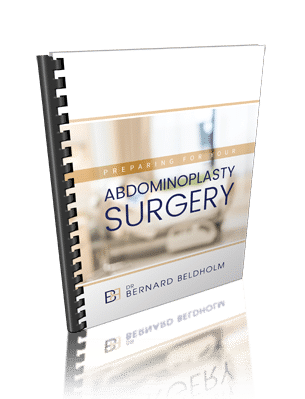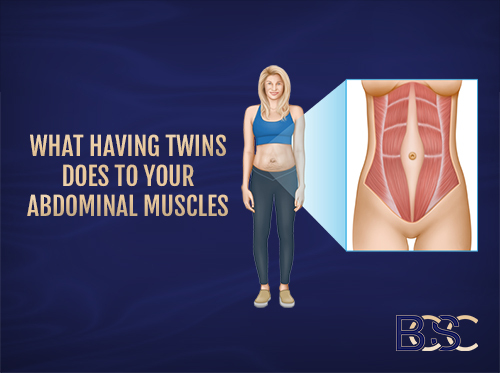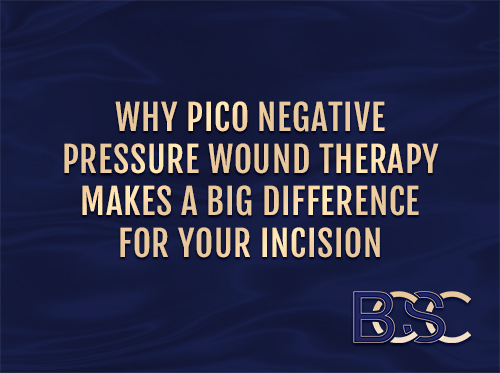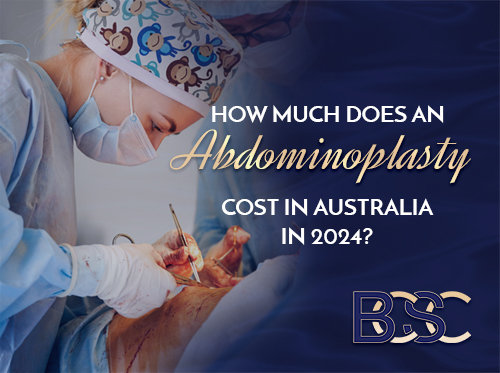Mini vs. Full Abdominoplasty: What is the Difference?
Full abdominoplasty and mini abdominoplasty are two different abdominoplasty procedures ** different types of abdominal skin bulging and **.
A mini (abdominoplasty) tummy tuck removes ** skin and fat and repairs loose abdominal muscles on the lower abdomen, while a full (abdominoplasty) tummy tuck removes ** skin and repairs loose abdominal muscles over the entire abdominal region.
While both procedures ** the issue of abdominal muscle separation and excess, ** abdominal skin and fat, their suitability differs in different patients. The main deciding factor between full and mini tummy tuck (abdominoplasty) is the reason for the abdominoplasty.

Disclaimer: Operation performed by Dr Bernard Beldholm. Adult content, surgery has risks; individual results vary, seek 2nd opinion. Please see the full disclaimer.
Abdominoplasty: The Reasons and Benefits
Abdominoplasty, tummy tuck surgery, is a surgical procedure to remove excess and redundant abdominal skin and fat. It eradicates excess ** tummy skin that a healthy diet and exercise cannot **. The major causes of excess abdominal skin include age, significant weight loss or gain, hormonal changes (intrinsic or extrinsic), pregnancy, drugs, and genetic defects.
Abdominoplasty (tummy tuck) also helps correct abdominal muscle separation (diastasis recti). In addition, a tummy tuck procedure (abdominoplasty) ** several conditions, including hernias, urinary symptoms like incontinence and bladder functioning, skin rashes, and other skin infections.
Ideally, the primary aim of abdominoplasty is to ** the abdominal contour. Sometimes, the surgeon may incorporate liposuction to remove excess abdominal fat.
Abdominoplasty is not recommended for individuals with certain health conditions, including uncontrolled diabetes, cirrhosis, or advanced cardiopulmonary disease. Also, smoking is discouraged in abdominoplasty patients.
Tummy tuck procedures (abdominoplasty) are not a substitute for weight loss. Doctors recommend abdominoplasty (tummy tuck ) to patients with ** BMI and ideal body weight. ** patients with low BMI experience ** results compared to those with a higher BMI.
Full Abdominoplasty

A full tummy tuck (abdominoplasty) procedure removes excess skin and tightens separated abdominal muscles over the entire abdomen. Individuals with excessive fat, skin laxity, and abdominal wall separation on the lower and upper abdomen are more suited for this procedure. In addition, it is suitable for women with multiple pregnancies requiring abdominal muscle repair.
The surgeon makes an incision horizontally along the bikini line. Also, there’s an additional incision around the belly button to reposition it. This is done for both full or extended tummy tuck procedures. Additionally, the surgeon can incorporate liposuction in cases where the patient has excess abdominal fat.
Mini Abdominoplasty

A mini tummy tuck (abdominoplasty) is less invasive than a full tummy tuck (abdominoplasty) procedure. It is also referred to as a partial abdominoplasty. The procedure suits patients with minimal or moderate subcutaneous fat and minimal to moderate abdominal wall laxity, primarily in the infra-umbilical region. The procedure focuses on the lower abdomen (below the navel) without repositioning the belly button.
The surgeon incurs horizontally along the bikini line, removes the excess skin on the lower abdomen, and tightens the lower abdominal muscles. However, due to the incision size, mini tummy tuck (abdominoplasty) doesn’t remove excess skin or repair loose muscles in the upper abdomen. Therefore, mini tummy tuck (abdominoplasty) patients should have less or no excess skin or separated muscles in the upper abdomen.
The Differences Between Mini and Full Abdominoplasty
Both tummy tucks (abdominoplasty) involve excess abdominal skin removal. However, several differences distinguish them. Below are some of the significant differences.
Incision Length
The type of abdominoplasty procedure influences the length of the incision during an abdominoplasty. The less ** skin the surgeon needs to remove, the less the incision size. A mini tummy tuck surgery (abdominoplasty) has a shorter incision than a full tummy tuck (abdominoplasty).
A full abdominoplasty incision is more extensive, allowing the surgeon to access greater abdominal tissue. A shorter incision length also translates to a reduced scar.
Surgical Scope (Correction Level)
Both procedures focus on different abdominal regions. A mini tummy tuck procedure (abdominoplasty) focuses mainly on the lower abdomen (below the belly button). The Full tummy tuck procedure ** the entire abdomen, from the pubic area to the ribs (lower and upper abdomen). This also applies to tightening of the abdominal muscles with a full tummy tuck (abdominoplasty) involving more extensive muscle repair (diastasis recti repair).
Belly Button Repositioning
During a full abdominoplasty, the surgeon ** the entire abdomen, separating and re-draping the skin above the navel. This will necessitate repositioning the belly button to give it an elevated and **. On the other hand, mini tummy tuck involves only the loose skin and not the belly button repositioning.
Surgery Period
The length of any abdominoplasty surgery is dependent on several factors. These include:
- The patient’s overall health
- Amount of ** skin
- Additional procedures (eg liposuction),
- Any previous surgical procedure
- Previous illness, and
- External vs. internal fat
Generally, a full abdominoplasty takes longer than a mini abdominoplasty.
A mini abdominoplasty is less invasive, requiring a shorter surgical period, one to two hours, and has a reduced risk of complications. However, a full abdominoplasty is more invasive. Due to the large scope of the surgical area, it translates to a longer surgical period, around two to three hours, and increased risks.
The duration increases when liposuction is involved. Also, at Body Contouring Surgery Clinic, both procedures are performed under general anaesthesia.
Note that additional tummy tuck performed procedures will also increase the period of each procedure. Abdominal muscle separation (diastasis recti) requires an additional thirty minutes, while hernia repair requires thirty minutes to one hour. It takes four to five hours for Dr. Beldholm to perform a VASER lipo-abdominoplasty.
Recovery Period

The procedure’s invasiveness determines the recovery period. However, genetics, overall health, and post-operative care may affect recovery. This makes individuals have different recovery periods.
A mini tummy tuck (abdominoplasty) requires less recovery period than a full tummy tuck (abdominoplasty) because it is less invasive. Most mini tummy tuck patients can resume their daily activities after a week, while full tummy tuck patients may require around two weeks. However, full recovery takes longer, with complete healing of the scars taking up to twelve months.
Which is the most Suitable Procedure for You?

The suitability varies in the degree of excess skin and fat to be removed and the abdominal region under focus. Therefore, it depends on individual goals, needs, and reasons for abdominoplasty.
A full tummy tuck (abdominoplasty) suits patients requiring extensive skin removal and muscle repair. On the other hand, mini tummy tuck (abdominoplasty) is more suitable for patients requiring minimal skin removal, which is only below the belly button. Mini abdominoplasty patients should have good middle or upper abdomen muscles and contours.
The best way to determine which abdominoplasty procedure suits you (mini tummy tuck vs. full tummy tuck) is to consult a specialist surgeon. The surgeon will determine the degree of skin to be removed and the extent of muscle separation and advise. In addition, the surgeon will customise the procedure, whether mini or full abdominoplasty, by incorporating additional procedures, like liposuction, to ** the overall results.
Mini vs. Full Abdominoplasty Cost in Australia
Notably, a full abdominoplasty is more expensive than a mini abdominoplasty because it is more extensive and requires more surgical time. However, cost depends on several factors.
These factors include the surgeon’s experience and expertise, procedure customisation, location, anaesthetic fee, and pharmacy costs, among other factors. The cost also depends on whether the patient qualifies for Medicare or private health fund rebates.
A mini abdominoplasty is usually a cosmetic operation that does not have an MBS item number, meaning you can not use private insurance. The cost of a mini-abdominoplasty will be higher if liposuction is added. The total cost (anaesthetist, surgeon and hospital) will range from 6,000 to 12,000.
For a full abdominoplasty, the biggest cost determinant is whether there is an MBS item number associated with it and if you have private health coverage. You need to meet the post-weight loss or post-pregnancy criteria to qualify for an MBS item number.
In addition, the final cost of a full abdominoplasty will depend on the extent of skin removal and liposuction. The expected total cost starts from 10,000 (with private health insurance and an MBS item number) but can surpass 20,000 if there is no MBS item number or private health insurance.
Also, note that cosmetic operations with no MBS item numbers have added GST. This tells you they are 10% more expensive than equivalent operations with an MBS item number.
If you’re considering an abdominoplasty procedure, book a consultation with Dr. Beldholm for a personalised review and cost quotation.
Common Complications Associated with Mini and Full Abdominoplasty
All surgical procedures, including traditional tummy tuck, pose a risk of complications, with some complications having a higher occurrence than others. In addition, different complications differ in severity.
The common complication associated with abdominoplasty is haematoma. If untreated, it can lead to skin necrosis due to inadequate blood supply or other infections that may destroy the skin flap.
Another complication is the umbilicus (belly button) vascular compromise. This is why the surgeon should ensure enough fat and blood supply for the umbilicus after dissection and repositioning.
Patients should watch out for any wound infections and report to their specialist surgeon. Mostly, these can be avoided by following post-operative care and attending follow-up sessions.
Bottom Line
Mini and full abdominoplasty procedures ** different degrees of abdominal skin ** and loose muscles. The suitability of each procedure majorly depends on the individual’s reason for abdominoplasty, the goal, and needs. Note that despite the similarities of the two procedures, they have significant differences that affect their suitability.
Therefore, it is essential to consult a qualified specialist surgeon before settling on one of the procedures. Above is everything you need to know regarding their differences and the suitability of each procedure.
References
- Michalska, A., Rokita, W., Wolder, D., Pogorzelska, J., & Kaczmarczyk, K. (2018c). Diastasis recti abdominis — a review of treatment methods. Ginekologia Polska, 89(2), 97–101.
- Greminger, R. F. (1987). The Mini-Abdominoplasty. Plastic and Reconstructive Surgery, 79(3), 356–364.
- Nb, S., Wc, H., Mills, S. D., Rajashekara, B., Taylor, Nb, T., Young, H., & Kivuls, J. (2008e). Abdominal Lipectomy: A Prospective Outcomes Study. The Permanente Journal, 12(2), 23–27.
- Israwi, D. E., & Watfa, W. (2023). Rectus Muscle Plication in Mini-abdominoplasty with Umbilicus Preservation. Plastic and Reconstructive Surgery. Global Open, 11(5), e4998.
- Ferraro, G., Rossano, F., Miccoli, A., Contaldo, L., & D’Andrea, F. (2007). Modified Mini-Abdominoplasty: navel transposition and horizontal residual scar. Aesthetic Plastic Surgery, 31(6), 663–665.
- Ramirez, A., Hsieh, T., Cárdenas, J. P., & Lao, W. W. (2020). Abdominoplasty. Annals of Plastic Surgery, 86(3S), S229–S234.
- Singla, N., & Rogier, T. (2022). Abdominoplasty as an acute postoperative pain model: insights from 8 years of clinical trials. Pain, 164(2), 258–270.
- Gutowski, K. (2018). Evidence-Based medicine. Plastic and Reconstructive Surgery, 141(2), 286e–299e.
- Staalesen, T., Elander, A., & Strandell, A. (2012b). A systematic review of outcomes of abdominoplasty. Journal of Plastic Surgery and Hand Surgery, 46(3–4), 139–144.
- Matarasso, A., Matarasso, D. M., & Matarasso, E. J. (2014c). Abdominoplasty. Clinics in Plastic Surgery, 41(4), 655–672.
- Klinger, M., Klinger, F., Giannasi, S., Bandi, V., Vinci, V., Catania, B., Lisa, A., Veronesi, A., Battistini, A., Giaccone, M., Caviggioli, F., & Maione, L. (2021). Aesthetic and Functional Abdominoplasty: Anatomical and Clinical Classification based on a 12-year Retrospective Study. Plastic and Reconstructive Surgery. Global Open, 9(12), e3936.
- De Freitas, R. S., Ascenço, A. S. K., Maluf, I., Nasser, I. J. G., Balbinot, P., Lopes, M. a. C., Forte, A. J., & Sadowski, J. (2013). Acute Abdomen after Abdominoplasty: Differential diagnosis. Aesthetic Plastic Surgery.



